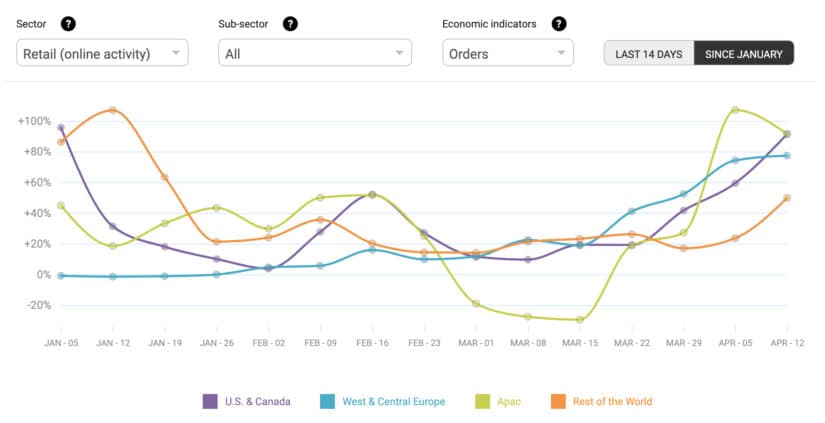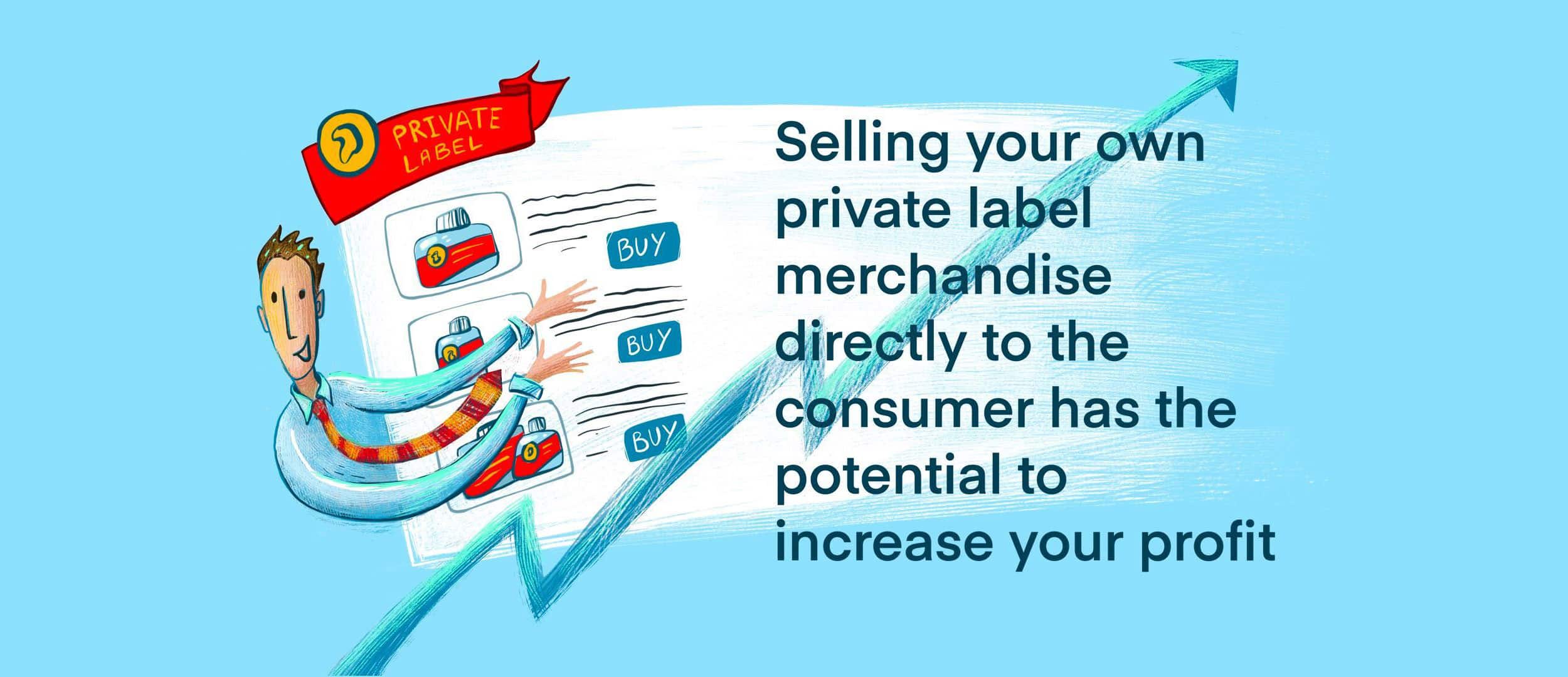It’d be an understatement to say life looks a little different now as we all cope with the ongoing threat of COVID-19. People are working from home, gatherings have been cancelled and some day-to-day activities — like simply going to the store — have to be reconsidered under the new rules of the virus.
As our world adapts to this new way of living, plenty of our collective habits have changed — not the least of which is shopping activity. Due to limited capacity in stores and calls to avoid physical contact as much as possible, e-commerce has boomed in the era of COVID-19.
Ccinsight reports that year-over-year online growth for U.S. retailers was up 68% in April 2020, rivaling that of the usual holiday rush. In response to this increased online activity, e-commerce sellers must learn to adapt quickly to the new demands of the market, gleaning long-lasting lessons from the virus. Let’s explore a few of these key takeaways and uncover their long-term implications.

Lesson 1:
Diversify your channels
In many ways, COVID-19 created the perfect storm for channel diversification:
- Consumers worldwide are cooped up in their homes, pushing more buyers into the e-commerce space than ever before
- Supply chain disruption and high demand for some products has led to shortages on some of the most popular channels
- Ecommerce giants like Amazon are struggling to deliver on their usual standards of service due to increased internal and external pressure
As a result, savvy buyers have started to explore alternative e-commerce channels to get the products they love — and smart brands have expanded into these channels, as well.
A survey of 2,000 U.S. consumers from PFSweb Inc found that 40% had shopped a new website during the pandemic, and 45% of those customers would continue to shop that site following a positive experience.
Taking home most of the third-party channel growth so far is Walmart, adding almost 10,000 new sellers to its marketplace since February and doubling the amount of sellers on its platform since last June. As the number of sellers on this channel trends upward, early adopters will be poised to capture greater market share in the long run, making the move particularly enticing. But if COVID-19 has taught us anything, it’s the importance of being agile and in control — two things that marketplaces also crucially lack.
Moving onto a new marketplace takes careful financial and operational consideration, and the application, acceptance and onboarding process isn’t necessarily quick. Moverover, sellers don’t have complete control over their buyers’ experience on a marketplace. That’s why many sellers have also turned to first-party options to gain more control over the end-to-end customer experience and quickly shift their operations in-house.

A direct-to-consumer site allows you to create a tailored shopping experience for your customers and gives you complete control over:
- Product information
- Shopping experience
- Crucial messaging such as COVID-related updates
- And more
And brands are taking notice of these benefits; new stores created on the Shopify platform grew 62% between March 13 and April 24 of this year. For sellers, this signals an important shift in taking back ownership of their selling experience, moving away from a previously marketplace-oriented strategy.
Lesson 2:
Explore fulfillment options
For many e-commerce sellers, Amazon is vital — and with good reason. Nearly half of all online shoppers start their product search on the channel, and top sellers can gross over $1 million in annual sales on the platform. Making the channel even more attractive is Fulfillment by Amazon (FBA), the hands-off logistical service that stores, packs and ships inventory for 94% of Amazon sellers.

But no matter how big or successful you are on Amazon, having more than one fulfillment option — at least as a back-up — is a must. Case in point: when Amazon announced in March they were delaying orders of any products deemed nonessential, many e-commerce sellers were left scrambling to find new fulfillment options so customers could receive their products in a timely manner.

Outside of FBA, there are plenty of other third party logistics (3PL) companies that can help sellers expand their fulfillment offerings, including:
- Shopify Fulfillment Network
- Walmart Fulfillment Services
- Flexport
However, the reality is that there aren’t enough 3PLs to absorb all of Amazon’s sales. And when speed really matters, switching to another 3PL provider doesn’t necessarily solve the problem;
it can take months to onboard with a new logistics partner due to tech integrations, SKU uploads and partnership coordination. Furthermore, as the middleman between your sales and your customers, 3PLs can act as a “black box” in your delivery process, taking away crucial visibility if something goes wrong.
As a result, many sellers have rolled up their sleeves and brought fulfillment in house in response to COVID-19. While this move requires operational infrastructure in order to succeed, sellers that fulfill their own orders also enjoy increased control over this critical step in order fulfillment, with the ability to make their own carrier decisions and save money on multi-channel fulfillment.
If you’re considering in-house fulfillment in response to the pandemic, make sure you have:
- Space to store your inventory
- Space, materials, and time to package orders
- Employees to manage the fulfillment process
- Software to manage inventory and process shipments
In the long run, scaling up your operations in this area will help you break free from third-party dependence, insulating your business from similar vendor-induced challenges in the future.
Lesson 3:
Prioritize visibility into inventory
In the wake of COVID-induced product hoarding and supply chain disruption, a survey by Survata found that 72% of respondents said they’re now more aware of product availability than ever before, and 64% say “perceived availability” of a product is a key factor in how they shop now.
Successful sellers need to respond to these new customer expectations with:
- Real-time data about inventory availability
- Up-to-date catalog listings
- Automated restocking workflows
Without a robust warehouse management system (WMS), sellers might rely on financial statements or sales data to estimate in-stock inventory levels; these imprecise calculations fail to provide the most up-to-date information about product availability, leaving sellers vulnerable to overselling, negative customer reviews and channel penalties. Furthermore, estimations about when to buy more stock and how much could lead to over– or under-buying.
A robust WMS that connects to all channels and purchasing data gives sellers the most accurate data, allowing them to automatically update listings when inventory is low and automatically order more stock when they need it most.
In light of today’s sensitivity toward inventory, Sellercloud has seen a 25% increase in its WMS usage over the past three months.

Putting sellers back in control
The outbreak of COVID-19 has influenced the e-commerce landscape forever, changing buying habits and providing valuable lessons for sellers:
- Diversify your channels to capture the new wave of buyers
- Expand your fulfillment options to increase independence and control
- Utilize technology to optimize product listings and inventory management
The days of single-sourced products, single-channel sales and single-vendor fulfillment have shown their weaknesses; in response, we’ve ushered in an era that empowers sellers to own more of their operations, sales channels and fulfillment.
If you’d like to expand and optimize your e-commerce operations in this new landscape, Sellercloud is here to help. Our comprehensive e-commerce platform connects to all of your sales channels, shopping carts, carriers and third-party fulfillment vendors with ease, and our WMS provides effective tools that improve efficiency in your warehouse and purchasing workflows.
We’ve designed our platform to meet the needs of today’s e-commerce landscape and prepare sellers for whatever the future brings. If you’d like to learn more, contact us today.